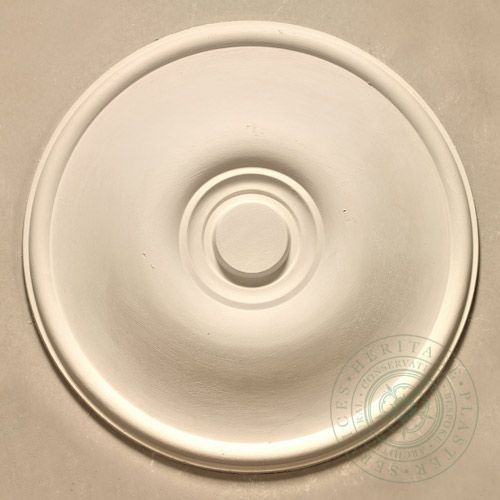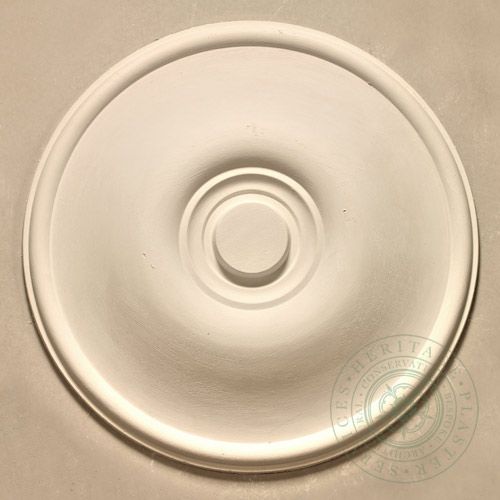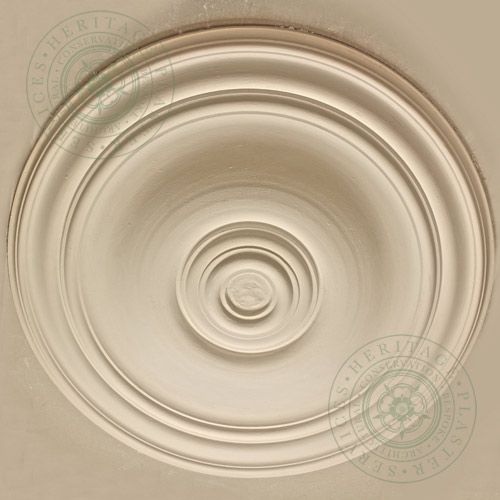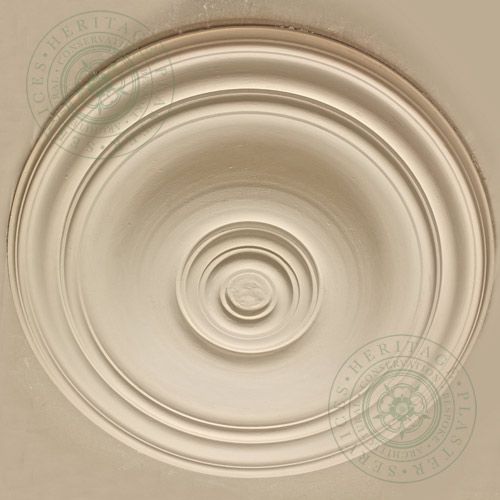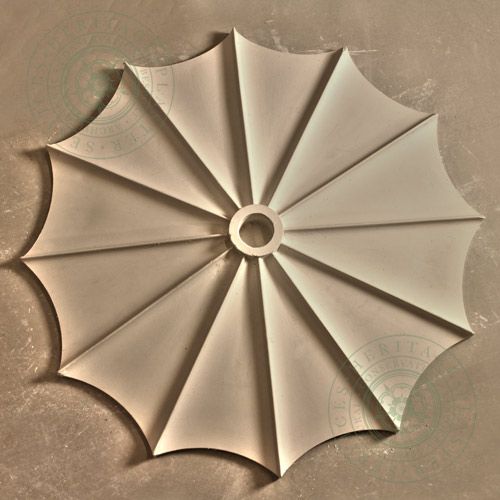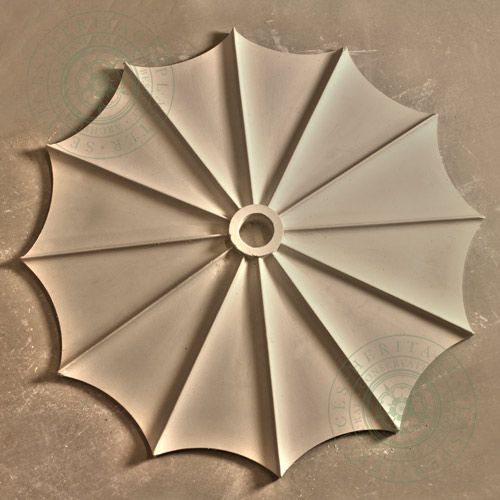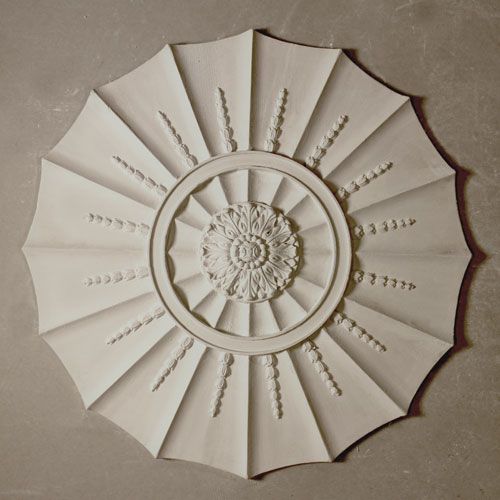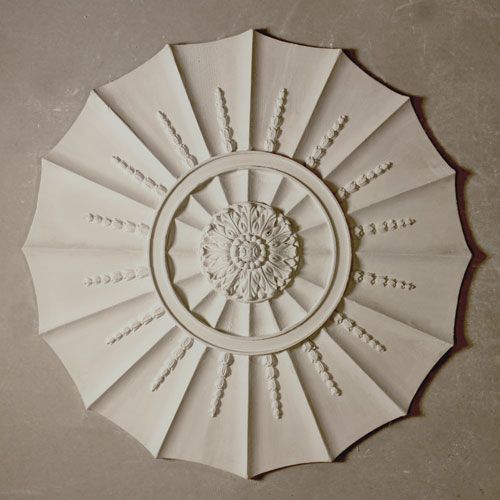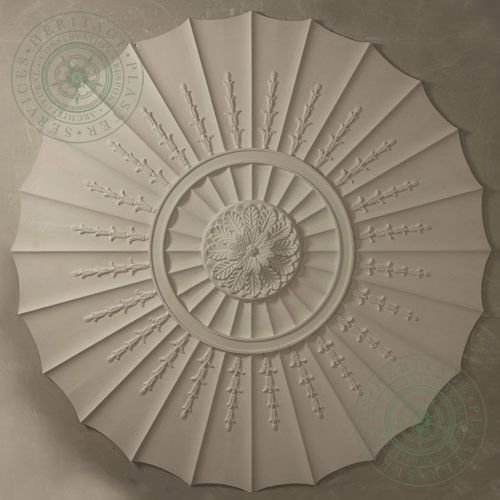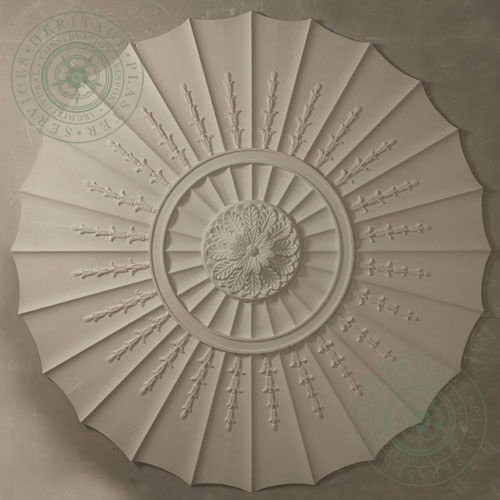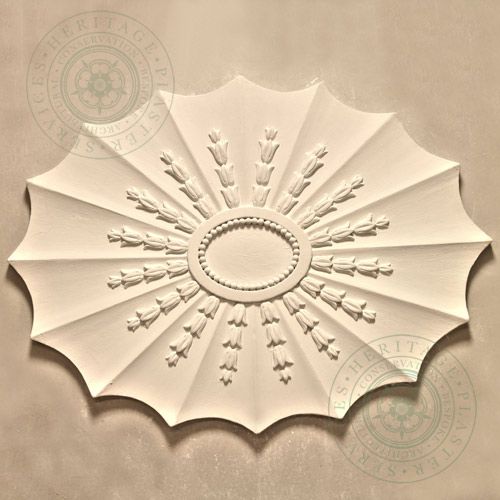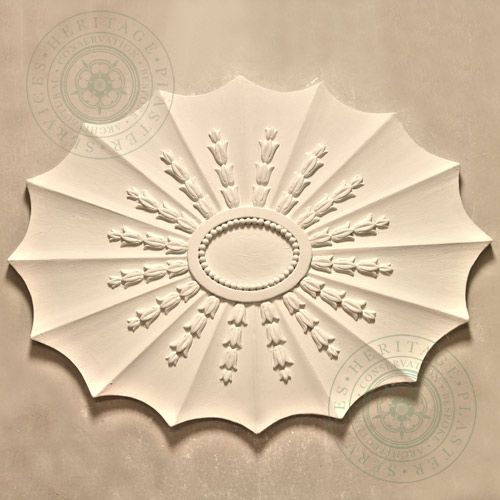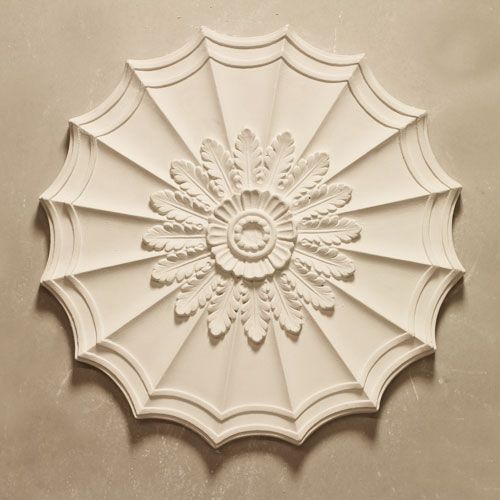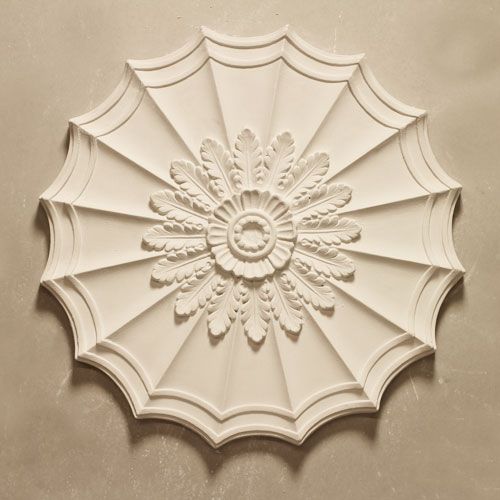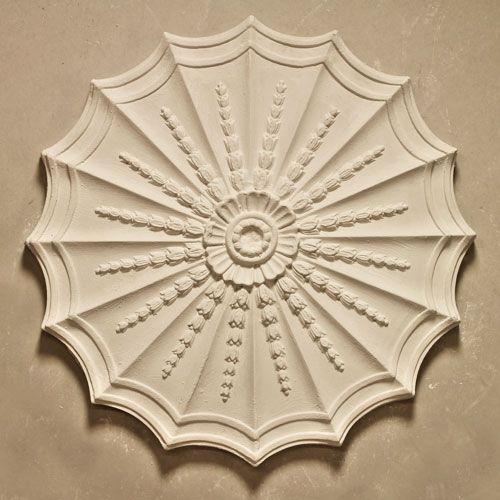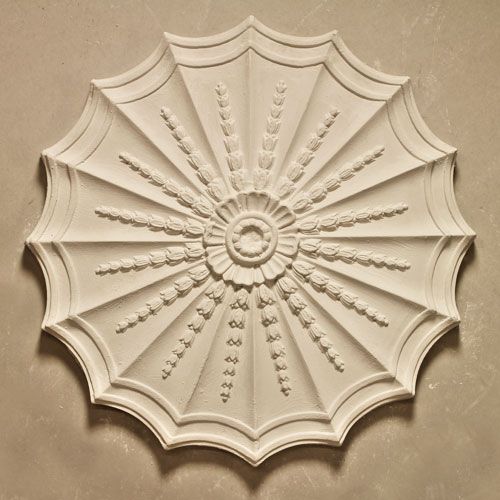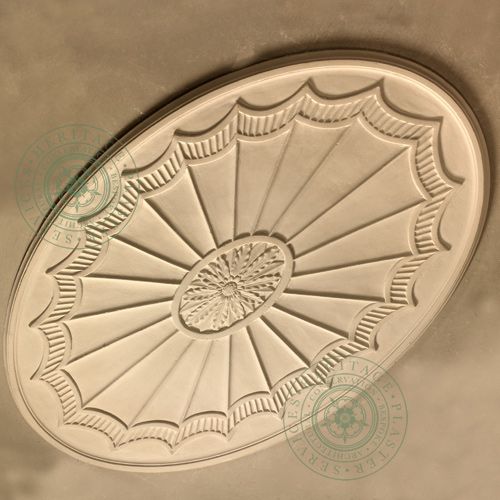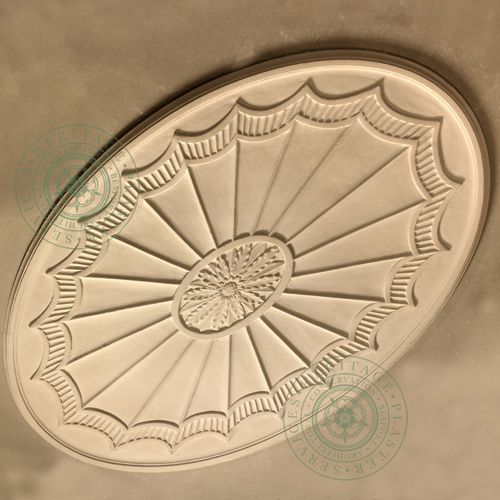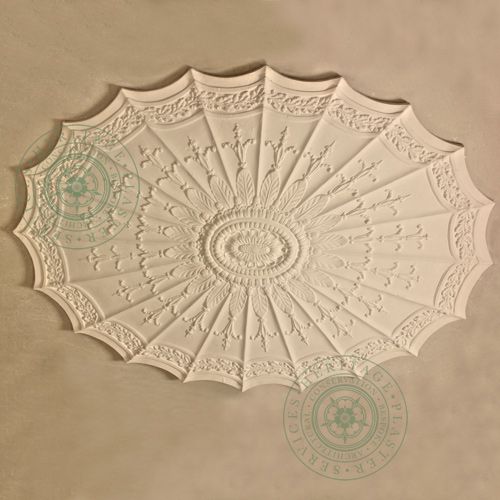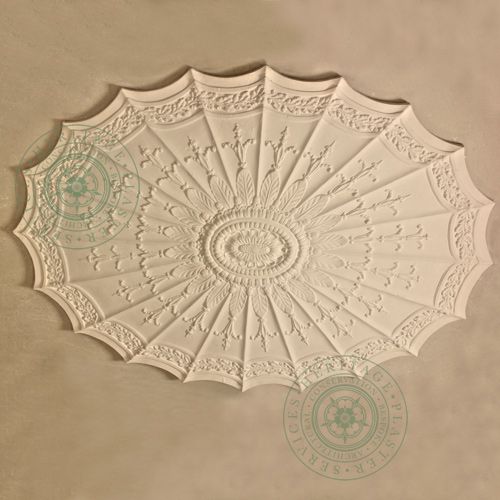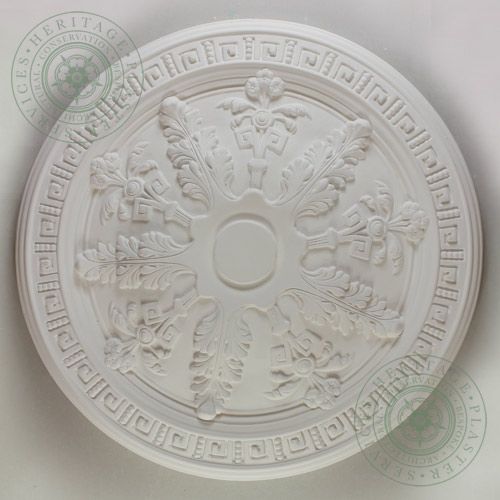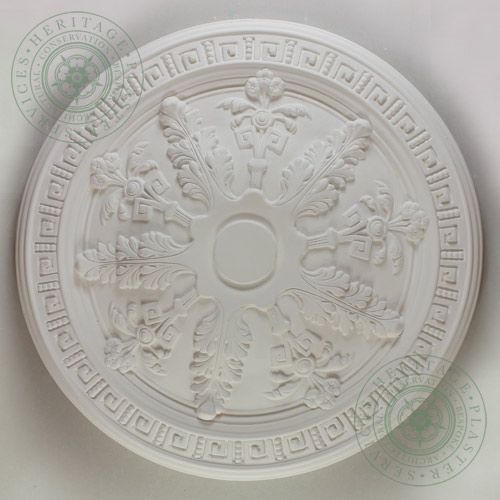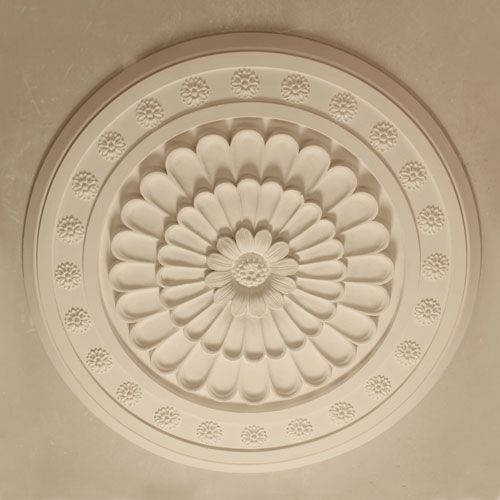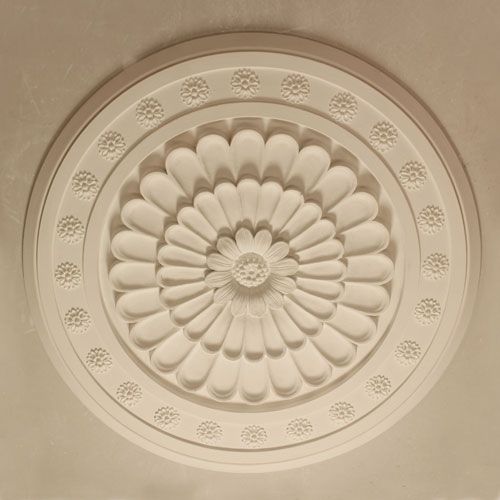All over-elaborate ceiling decoration was moved away from during the Regency period whereby ornament was usually confined to the cornice, the border of the ceiling plane and to the ceiling rose. Ceiling Roses at this time became bolder and tended to be decorated with combinations of rosette and patera motifs with radiating leaves.
In the early Victorian years, there was another shift in taste, the ceilings of the larger Victorian houses allowing plasterers great opportunity to demonstrate their skills. Elaborate ornamentation illustrates this both on ceiling decoration and intricate patterns on the cornice. The best rooms now have gasoliers hung from ornate ceiling roses, where more modest homes would have a simple plain run cornice and a simple ceiling rose.
With the patent of fibrous plaster in 1856, the higher relief and more intricate works became possible, with the more complex and detailed designs being formed by multi-leaf designs with each leaf being applied separately to form the rose as a whole.
Such applied ceiling roses and mouldings can create a great effect, but the setting out to such a ceiling needs to be carefully thought out to ensure it suits the architectural period of the property, the overall interior design, and fits with modern lighting and media requirements. Also, the centralising of any rose needs to be correct, i.e. to the centre of the room; or to any particularities that may exist in a particular room such as chimney breast or large window. In some cases, it is a better design to use two roses. When choosing a design attention is needed to ensure the rose doesn’t distract attention away from any intended chandelier or special lighting detail.


